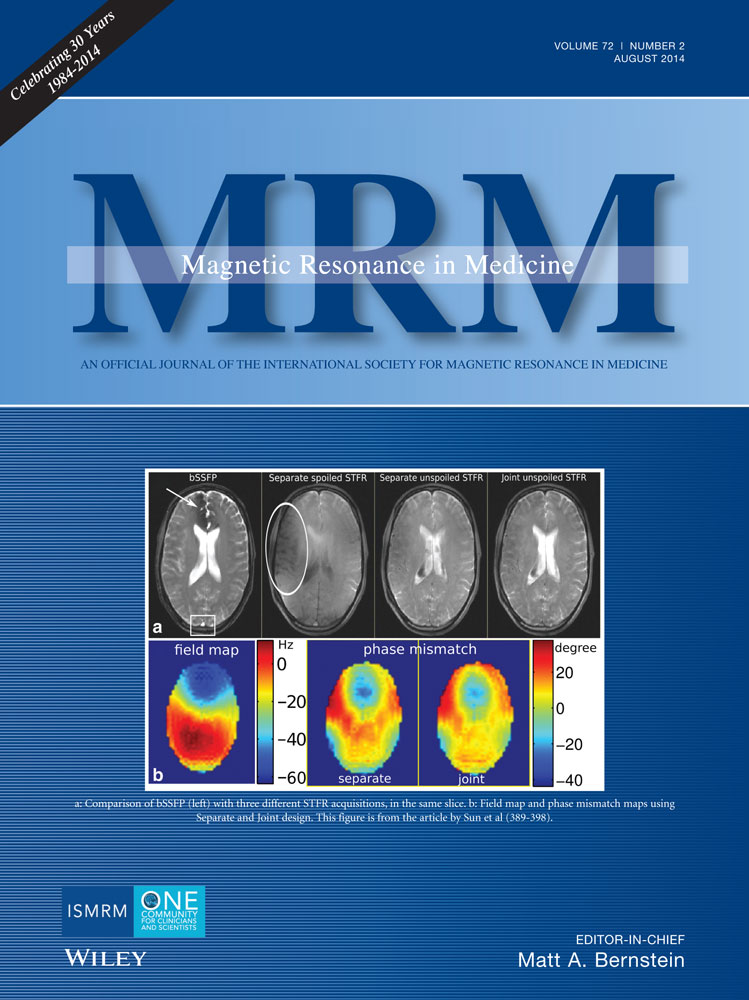Flow compensated quantitative susceptibility mapping for venous oxygenation imaging
Correction added after online publication 11 October 2013. The equation in the Gradient Moment Nulling section of this paper has been revised. The argument t was added to G(t). In the second and third rows, second column: the integration limits changed from [nTE, (n+1)TE] to [(n−1)TE, nTE] while adding the condition (n > 1). Third column: the integration limits changed from [nTE, (n+1)TE] to [0, nTE], while replacing t by (t-nTE) in the integrand.
Abstract
Purpose
Venous blood oxygen saturation is an indicator of brain oxygen consumption and can be measured directly from quantitative susceptibility mapping (QSM) by deconvolving the MR phase signal. However, accurate estimation of the susceptibility of blood may be affected by flow induced phase in the presence of imaging gradient and the inhomogeneous susceptibility field gradient. The purpose of this study is to correct the flow induced error in QSM for improved venous oxygenation quantification.
Methods
Flow compensation is proposed for QSM by using a fully flow compensated multi-echo gradient echo sequence for data acquisition. A quadratic fit of the phase with respect to echo time is employed for the flow phase in the presence of inhomogeneity field gradients. Phantom and in vivo experiments were carried out to validate the proposed method.
Results
Phantom experiments demonstrated reduced error in the estimated field map and susceptibility map. Initial data in in vivo human imaging demonstrated improvements in the quantitative susceptibility map and in the estimated venous oxygen saturation values.
Conclusion
Flow compensated multi-echo acquisition and an adaptive-quadratic fit of the phase images improves the quantitative susceptibility map of blood flow. The improved vein susceptibility enables in vivo measurement of venous oxygen saturation throughout the brain. Magn Reson Med 72:438–445, 2014. © 2013 Wiley Periodicals, Inc.




